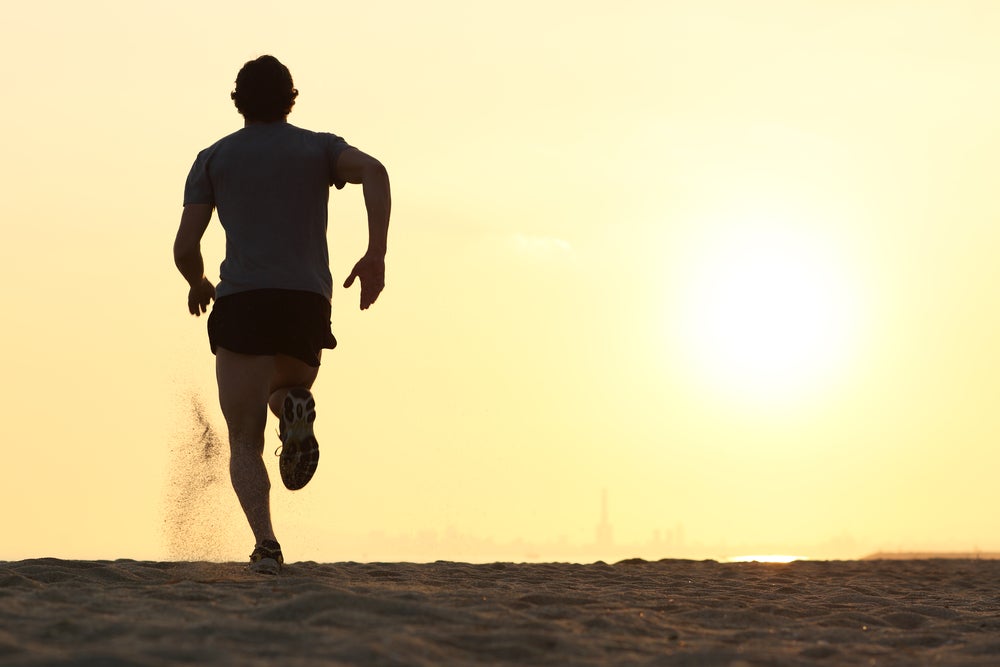How To Treat A Sunburn

Photo: Shutterstock.com
Feeling the burn? A dermatologist shares how to recover.
Almost every single triathlete has made the mistake of skimping on the sunscreen—and paid for it. The day after a long race, a sunburn can be just as painful (if not more painful) than muscle soreness or chafed skin. Soothe your skin with these tips from Dr. Cynthia Bartus, a dermatologist and triathlete from Allentown, Penn.
Sunburn 101
A sunburn happens when the skin is overexposed to ultraviolet radiation from the sun. There are different degrees of severity to sunburns, says Bartus:
“The mildest form is a suntan—caused by lesser amounts of ultraviolet radiation. The majority of sunburns fall into the category of first degree, or superficial, burns characterized by skin redness, dryness, and pain.”
A severe sunburn, resulting in red, moist skin with blistering that is very painful falls into the category of a second degree burn, termed “superficial partial thickness” burn.
It takes about two to four hours for skin changes to appear after sun exposure, with the redness peaking at about 24 hours post-sun. As the redness develops, the skin may start to hurt and feel warm. Some also report experiencing fever and chills. Though these symptoms are normal and should resolve quickly, intense symptoms require medical intervention. If experiencing skin infection, severe pain, dehydration, or signs of other heat-related illness (such as heat exhaustion or heat stroke), get to a doctor immediately.
RELATED: The Triathlete’s Sun Safety Toolbox
Your Action Plan
The best approach for a sunburn, of course, is to make sure one doesn’t happen at all. Taking precautionary measures, such as avoiding the sun during peak hours (10 a.m.-2 p.m.), wearing protective clothing, and applying a generous amount of broad-spectrum, water-resistant sunscreen every 90 minutes can help reduce the risk of redness.
Already feeling the burn? Swift action can minimize pain and peeling. Immediately, Bartus recommends taking an aspirin or ibuprofen to help minimize the redness, pain, and swelling. Drinking water is also a key element of damage control, as sunburn and dehydration often go hand-in-hand. Finally, take a cool bath or shower as soon as possible to help soothe the skin.
There are many creams and lotions on the market advertising relief and fast healing for sunburned skin. Bartus says your best bet is a regular moisturizing cream applied multiple times per day. Despite the hype, aloe is not a magic elixir for sunburns:
“Moisturizers that contain aloe may be beneficial, but are probably no more effective than a non-aloe containing moisturizer,” says Bartus. “Also, avoid products that contain “-caine” ingredients (such as benzocaine). These products can cause further irritation or allergic reactions.”
If a regular moisturizing cream doesn’t cut it, Bartus says hydrocortisone cream, applied twice daily, can be used for any particularly uncomfortable areas.
RELATED: Triathlon’s Dirty Little Secret
To Peel or Not to Peel?
As the skin regenerates, dead skin will flake off—what most people call “peeling.” Though it can be tempting to slough off the skin for cosmetic reasons, Bartus warns against interfering with your body’s natural processes:
“Avoid peeling the skin! Frequent application of a skin moisturizer will help make the skin look and feel less dry. If blisters have formed, avoid popping or peeling them. The blisters allow the skin to heal and prevent infection.”
A sunburn will heal on its own within one to two weeks. During this time, keep skin well-moisturized and protected from the sun during the healing process. And, of course, restock your medicine cabinet with SPF for your next big day in the sun.